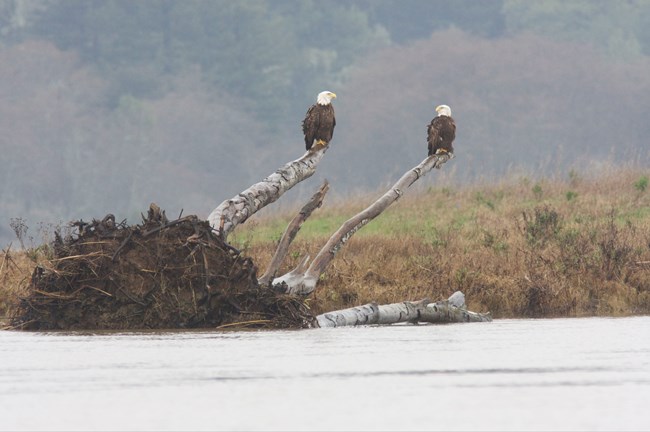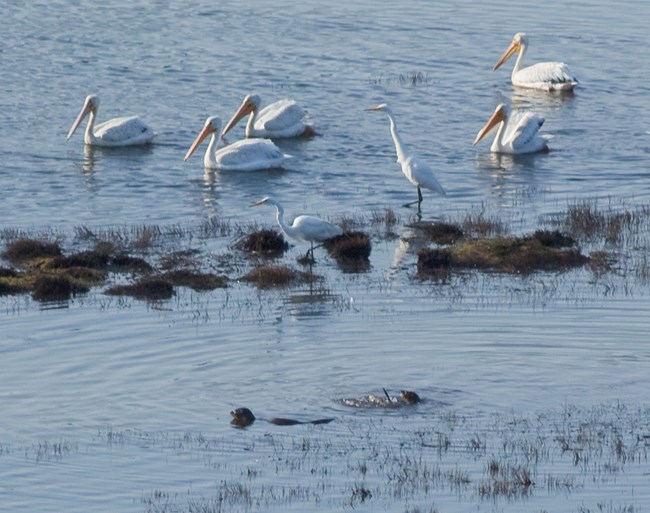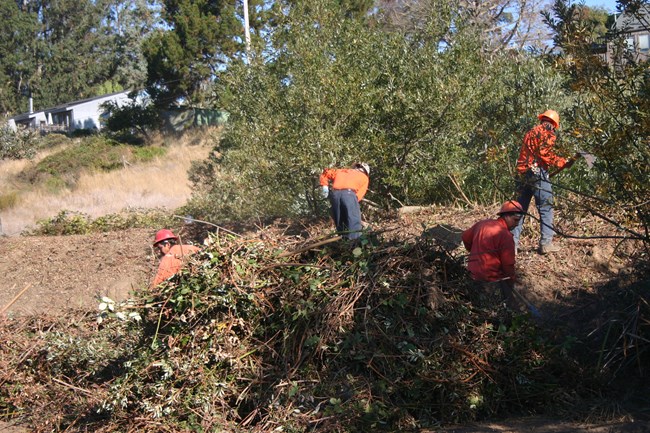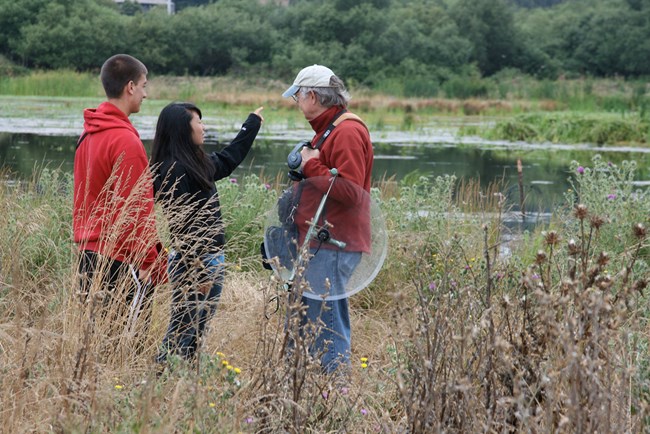Welcome to the Restoration Web Page for the Giacomini Wetland Restoration Project.
© Galen Leeds. Last updated: December 2023 We are just ending Year 15 in the restoration cycle and have been excited to see the many changes the past 15 years have had in store for us. We have commemorated the final breaching of the levees in 2008 with several anniversary events over the years, the most recent being on October 28, 2013. Since breaching of the levees, we have witnessed some dramatic changes. Pastures rapidly converted to salt marsh at lower elevations, and riparian habitat along Lagunitas and other creeks continue to expand with cessation of levee and channel maintenance activities. The dramatic inflow of water with levee removal was also accompanied by a large influx of dabbling ducks, shorebirds, nesting birds, bald eagles, river otters, and rare plants, and benthic invertebrates. Water quality showed some pronounced improvement seemingly instantaneously, including for pathogen indicators such as fecal coliform. The fish community shifted from one supporting non-native species such as mosquitofish (Gambusia affinis) to one dominated by native resident estuarine species such as arrow goby (Clevelandia ios) and threespine stickleback (Gasterosteus aculeatus). By year 3, tidewater goby (Eucyclogobius newberryi)—a federally endangered brackish water fish species—had expanded into Lagunitas Creek and some of the newly created tidal marsh channels. Tidewater goby hadn’t been sighted in the Tomales Bay watershed since 1953 until it was discovered in some of the diked channels in Giacomini Dairy Ranch in the early 2000’s as part of baseline surveys. 
© Louis Jaffé, Point Reyes Station. Dramatic growth in seemingly every indicator of wetland health continued through Year 5, as was documented in a five-year comprehensive monitoring report (available upon request), which summarized all of changes observed in the Giacomini Marsh since restoration. However, by Year 10, we started to see some leveling off or even downward trends in trajectories for a number of ecological indices. (Visit the Tenth Anniversary: Research Summaries page for more details.) In many ways, the restored marsh was beginning to enter into a new phase of Dynamic Equilibrium, as ecological niches opened up by the rapid conversion of pasture to marsh were steadily filled up, resulting in a slowing of the seemingly exponential growth trends experienced early on. A more in-depth discussion of this shift in restored wetland dynamics can be found on our Reflections on Restoration: 15 Years after Breaching of the Levees at Giacomini page. One of the more puzzling changes documented was that tidewater goby, which, as noted before, had been rapidly expanding in the first 5 years after restoration, seemingly had disappeared by Year 10. Conventional fish monitoring using a seining technique did not locate this small fish species in either summer or fall surveys in 2018, and follow-up surveys in 2019 were also unsuccessful in detecting goby. In 2022, the Seashore partnered with the Point Reyes National Seashore Association (PRNSA) to fund efforts to relocate this species using an entirely different technique based on genetic sampling. Samples of both water and sediment at multiple locations in Giacomini and some nearby natural marshes were collected by University of California, Santa Cruz, students and staff to run both eDNA and qPCR tests to try and determine whether goby might still be present in the restored wetland. Laboratory analyses haven’t been fully completed, but preliminary results suggest that the goby is still present in the restored wetland. National Park Service staff hope to use this information to better focus future fish monitoring efforts to relocate the goby. 
NPS Photo / Lorraine Parsons Is Restoration Work Really Complete?Construction has largely been completed, but the Seashore and PRNSA intend to continue fundraising efforts to expand or continue active restoration efforts in the Giacomini Ranch and Olema Marsh. The Seashore is currently working on a potential adaptive restoration project in the West Pasture near Inverness Park. It also has had preliminary conversations with Audubon Canyon Ranch (ACR) by continuing restoration efforts at Olema Marsh, which is jointly owned by ACR and the Seashore. While bulldozers and excavators may be gone, this doesn't mean that no work is happening at Giacomini. Since 2008, the Seashore and PRNSA have been partnering on invasive plant species removal at Giacomini, including perennial pepperweed (Lepidium latifolium), acacia, and ruderal weeds such as poison hemlock (Conium maculatum), fennel (Foeniculum vulgare), mustard (Brassica spp.), radish (Raphanus spp.), and others from the Giacomini Mesa adjacent to the town of Point Reyes Station. Perennial pepperweed is a highly invasive weed that has completely taken over many tidal high marsh habitats in San Francisco Bay and, if allowed to spread, could threaten wetlands in Tomales Bay, eliminating the value of these critically important areas for native plant and wildlife species. Control of this species is difficult, because it spreads both through abundant seed production and rapid spread of underground rhizomes. 
NPS Photo / Jessica Luo
Not Just a Local Treasure Anymore Giacomini Wetlands isn't just a local treasure anymore. A visiting reporter from the New York Times returned to Point Reyes Station to find the former Giacomini Ranch greatly changed. Follow this link to learn how flooding and ebbing of the tides gave him a new perspective on time and life. What's Happening with the Restoration? Water, Water, and More Water: The Newly Restored System Continues to Evolve Hydrologically -- Content for this page was composed by Lorraine Parsons, Project Manager, Giacomini Wetland Restoration Project, Point Reyes National Seashore Adobe® Acrobat Reader® may be needed to view PDF documents. |
Last updated: September 15, 2024
